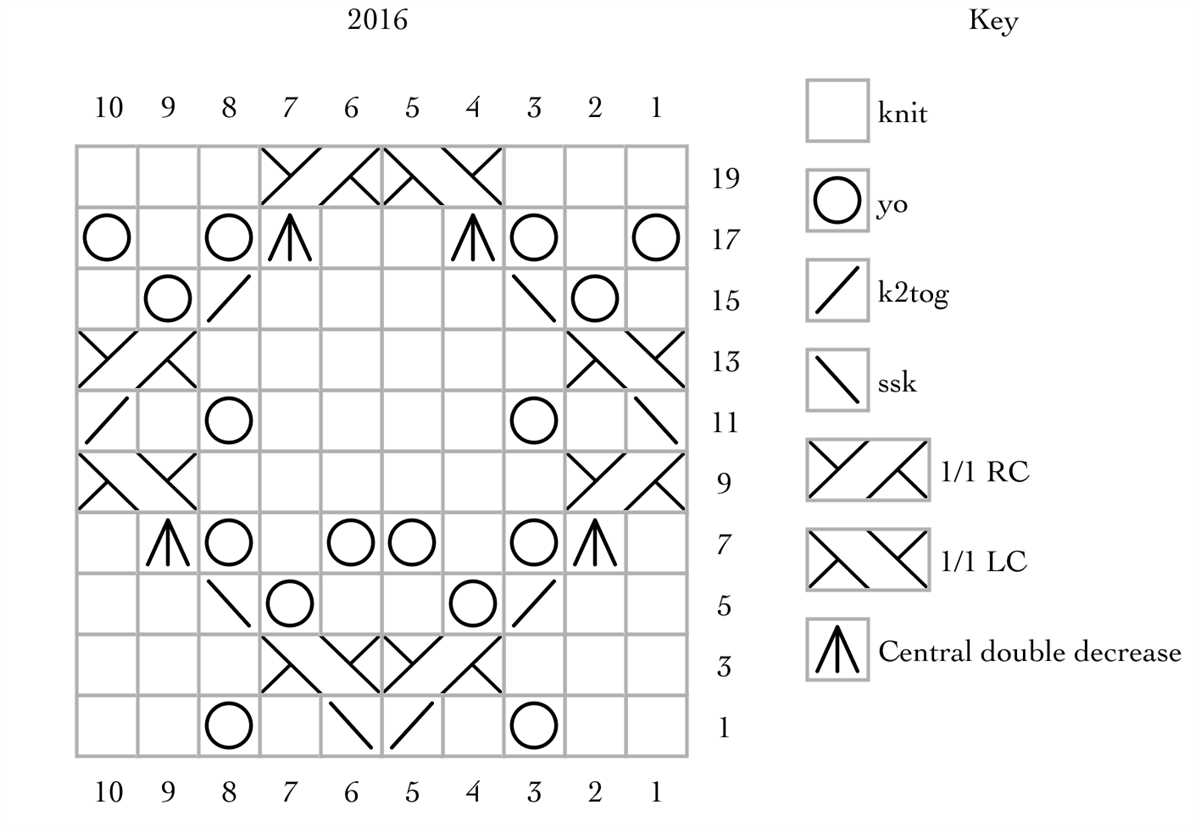
Knitting is a craft that has been around for centuries, passed down from generation to generation. One of the most popular techniques in knitting is lace knitting, which involves creating intricate patterns using yarn and needles. Lace knitting stitch patterns are known for their delicate and airy appearance, created by intentionally adding holes and drops in the knitting. This technique creates beautiful, openwork designs that can be used in various projects such as shawls, scarves, and even garments.
There are countless lace knitting stitch patterns available, each with its own unique design and level of difficulty. Some lace patterns are simple and consist of just a few basic stitches, while others are more complex and require advanced knitting skills. Lace knitting stitch patterns can range from floral motifs to geometric shapes, allowing knitters to showcase their creativity and personal style.
When working with lace knitting stitch patterns, it is important to use a fine yarn and smaller needles to achieve the desired effect. This allows the stitches to open up and create the airy appearance that lace knitting is known for. Additionally, lace knitting often incorporates techniques such as yarn overs (YO), knit two together (K2tog), and slip slip knit (SSK) to create the intricate patterns.
Whether you are a beginner knitter looking to try something new or an experienced knitter looking for a challenge, lace knitting stitch patterns offer endless possibilities for creativity and design. From delicate lace shawls to intricate lace sweaters, this technique allows knitters to create beautiful and timeless pieces that are sure to impress.
What are lace knitting stitch patterns?

Lace knitting stitch patterns are intricate and delicate patterns that are created using a combination of knit and purl stitches. These patterns are commonly used in knitting projects to create beautiful lace designs in shawls, scarves, sweaters, and other garments. Lace knitting stitch patterns add elegance and flair to any project, making them a popular choice for both experienced and beginner knitters.
There are various types of lace knitting stitch patterns, each with their own unique characteristics. Some lace patterns feature intricate motifs and intricate details, while others have a more open and airy look. Common lace knitting stitch patterns include the feather and fan stitch, the diamond lace stitch, and the leaf lace stitch. These patterns often incorporate yarn overs and decreases to create the lacey effect.
- Feather and fan stitch: This lace knitting stitch pattern features alternating bands of feather-like motifs and fan-like motifs. It creates a visually stunning pattern that is perfect for shawls and scarves.
- Diamond lace stitch: The diamond lace stitch pattern consists of a series of diamond-shaped motifs that are created using a combination of yarn overs, knit stitches, and decreases. This pattern adds a touch of elegance and sophistication to any knitting project.
- Leaf lace stitch: As the name suggests, the leaf lace stitch pattern resembles delicate leaves. It is created using a combination of yarn overs and decreases to create the leaf shapes. This pattern is often used in sweaters and cardigans to add a natural and organic touch to the design.
When knitting lace stitch patterns, it’s important to use fine and lightweight yarns to achieve the delicate and airy effect. Lace knitting requires attention to detail and precision, as the patterns often involve complex stitch combinations. However, with practice and patience, knitters can master these intricate patterns and create stunning lace designs.
History of Lace Knitting
Lace knitting is a technique that has a rich history and has been practiced for centuries in various cultures around the world. The earliest examples of lace knitting can be traced back to the 16th century in Europe, particularly in countries like Italy and Belgium. During this time, lace knitting was primarily used in the creation of garments and accessories for the aristocracy and the upper classes.
One of the most famous examples of lace knitting from this period is the “Venetian stitch,” which is characterized by its delicate and intricate patterns. This stitch became popular in Venice and was often used in the creation of intricate lace shawls and collars. It was during the 17th and 18th centuries that lace knitting began to reach its peak in popularity.
The 19th century brought about significant changes in the world of lace knitting. The advent of industrialization and the rise of the textile industry led to the mass production of lace. However, handmade lace knitting continued to be valued for its uniqueness and craftsmanship. Lace knitting patterns began to evolve and incorporate more complex motifs and stitches.
Today, lace knitting is still highly regarded for its beauty and elegance. Knitters around the world continue to explore and create new lace knitting patterns, combining traditional techniques with modern designs. Lace knitting has become a form of artistic expression, with knitters experimenting with different fibers, colors, and stitch combinations to create unique and intricate lace garments and accessories. Whether it’s a delicate lace shawl or a cozy lace sweater, lace knitting continues to captivate and inspire knitters of all skill levels.
Techniques for knitting lace

Lace knitting is a beautiful technique that creates intricate and delicate patterns in your knitting. It involves creating holes, or “eyelets,” in your fabric by intentionally increasing and decreasing stitches in specific ways. While lace knitting may seem challenging at first, with some practice and the right techniques, you can create stunning lace garments and accessories. Here are some techniques to help you master lace knitting:
1. Yarn overs
A key element of lace knitting is the yarn over (YO) stitch. This technique involves wrapping the yarn around the needle to create an extra stitch and a decorative hole in the fabric. To do a yarn over, simply bring the yarn to the front (if you’re knitting) or to the back (if you’re purling), then wrap it over the needle and continue with the next stitch. Yarn overs are often paired with decreases to create the lace patterns.
2. Decreases
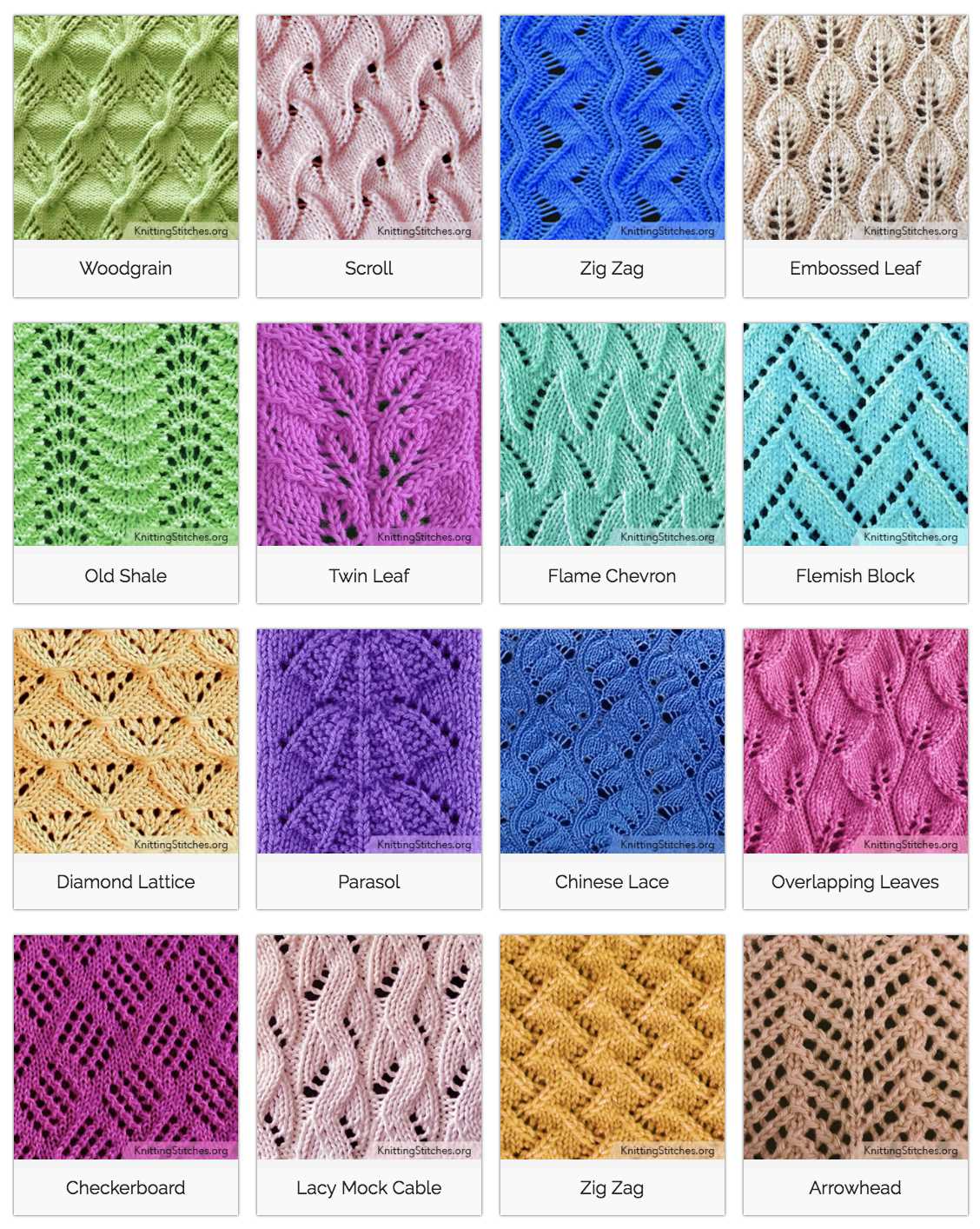
In lace knitting, decreases are used to balance out the yarn overs and create the intricate lace patterns. Common decrease stitches used in lace knitting include knit two together (K2tog), slip, slip, knit (SSK), and knit two together through the back loops (K2tog tbl). These decrease stitches lean in different directions, allowing you to shape your lace work and achieve the desired pattern.
3. Reading lace charts
Many lace knitting patterns are presented using charted instructions instead of written out line by line. Learning how to read lace charts can greatly enhance your lace knitting skills. Lace charts use symbols to represent different stitches and actions, making it easier to visualize the pattern and track your progress. It’s essential to understand the key and legend provided with the lace chart to accurately interpret and follow the pattern.
4. Blocking
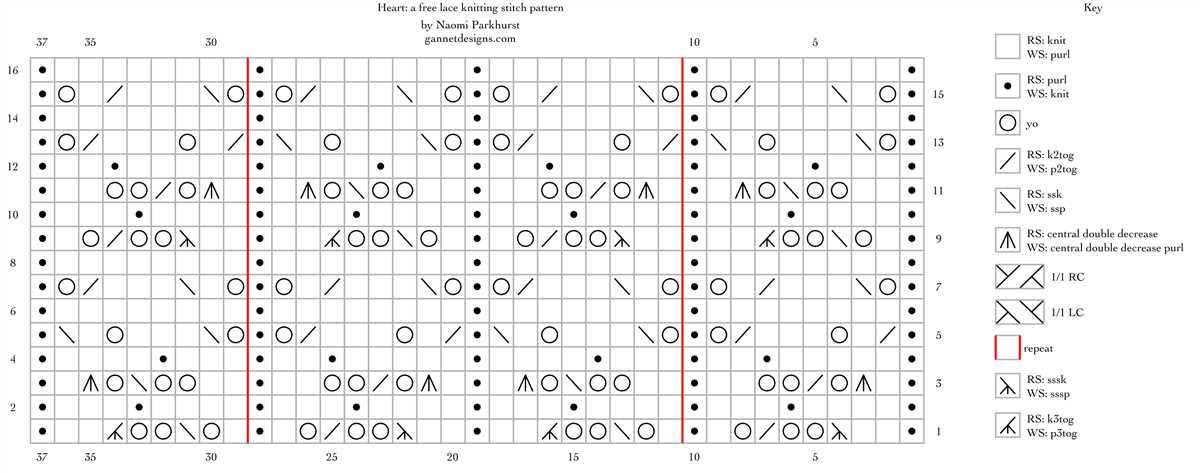
Blocking is a crucial step in lace knitting that helps to open up the lace stitches and make the pattern more visible. It involves wetting the finished lace piece, gently shaping it to the desired dimensions, and allowing it to dry flat. Blocking can transform your lace knitting, making it look more professional and polished. It also helps to even out any uneven stitches and fix any mistakes made during the knitting process.
With these techniques, you can confidently take on lace knitting projects and create beautiful lace patterns. Remember to practice and have patience, as lace knitting requires precision and attention to detail. Happy lace knitting!
Choosing the right yarn for lace projects

When it comes to lace knitting, the choice of yarn is crucial. It can greatly affect the overall look and feel of the finished piece. There are a few factors to consider when selecting yarn for lace projects.
Fiber content: One of the first things to consider is the fiber content of the yarn. For lace knitting, it is best to choose a yarn that has some natural elasticity, such as wool or a wool blend. This will help the lace stitches to retain their shape and create a beautiful drape. Silk or silk blends can also be a good choice for a more luxurious and delicate look.
Weight and gauge: The weight of the yarn is another important consideration. Lace patterns often require finer yarn weights, such as lace or fingering weight. These thinner yarns allow for more intricate stitchwork and create delicate and airy fabrics. It is also important to check the gauge recommended for the lace pattern you are using and ensure that the yarn you choose will produce the desired results.
Color and texture: The color and texture of the yarn can also play a role in the overall effect of the lace project. Solid or semi-solid colors can help showcase the intricate stitch patterns, while variegated or self-striping yarns can add visual interest and dimension. It is important to consider how the color and texture of the yarn will interact with the lace stitches and the overall design of the project.
Care instructions: Lastly, it is important to consider the care instructions for the yarn. Lace projects often require delicate handling and may need to be blocked and re-blocked to maintain their shape. It is important to choose a yarn that is easy to care for and can withstand the necessary blocking and washing processes.
By considering these factors, you can choose the right yarn for your lace project that will enhance the beauty of the stitches and create a stunning finished piece.
How to read lace knitting charts
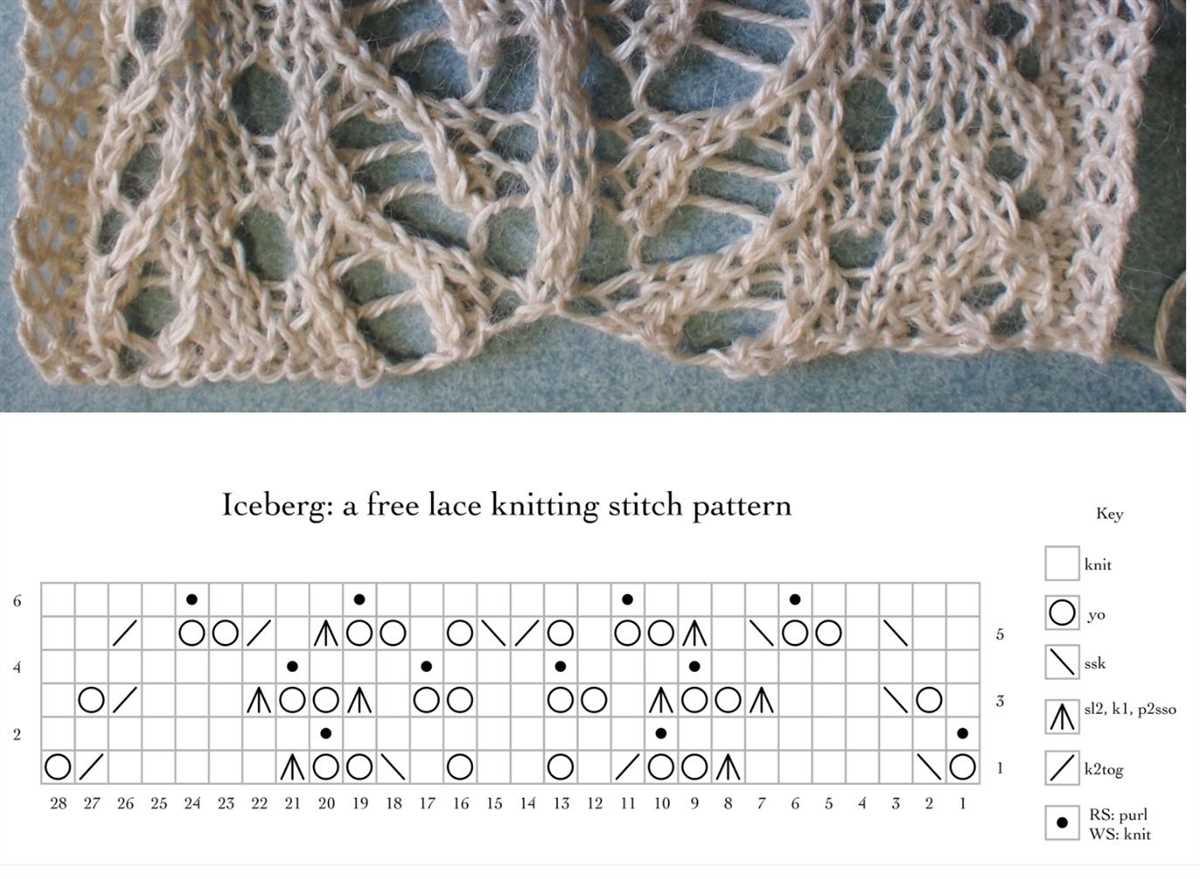
In lace knitting, charts are commonly used to visualize the stitch patterns. These charts consist of a grid with symbols and lines representing the different stitches and their placement in the pattern. Understanding how to read lace knitting charts is key to successfully knitting lace projects.
1. Familiarize yourself with the symbols: Lace knitting charts use specific symbols to represent different stitches. Common symbols include circles for yarn overs, slashes for knit two together, and backslashes for slip two stitches together knitwise.
2. Read the chart from right to left: Lace knitting charts are read from right to left, just like you knit. Each row of the chart represents a row of knitting. The right side row is read from right to left, and the wrong side row is read from left to right.
3. Follow the chart key: Most lace knitting charts come with a chart key that explains the symbols used in the chart. Make sure to refer to the chart key for clarification on symbols and their meanings.
4. Pay attention to stitch counts: Lace knitting charts often include stitch counts at the beginning and end of each row. These stitch counts help maintain the correct number of stitches and ensure the pattern is being followed correctly.
5. Use stitch markers: To make it easier to read and follow lace knitting charts, use stitch markers to mark the beginning and end of each pattern repeat. This will help keep track of where you are in the chart and prevent mistakes.
6. Be patient and practice: Reading lace knitting charts can be challenging at first, but with practice, it becomes easier. Take your time, double-check your work, and don’t be afraid to unravel and start again if needed. Patience and practice will lead to success in knitting lace patterns.
Common lace knitting stitches and their variations
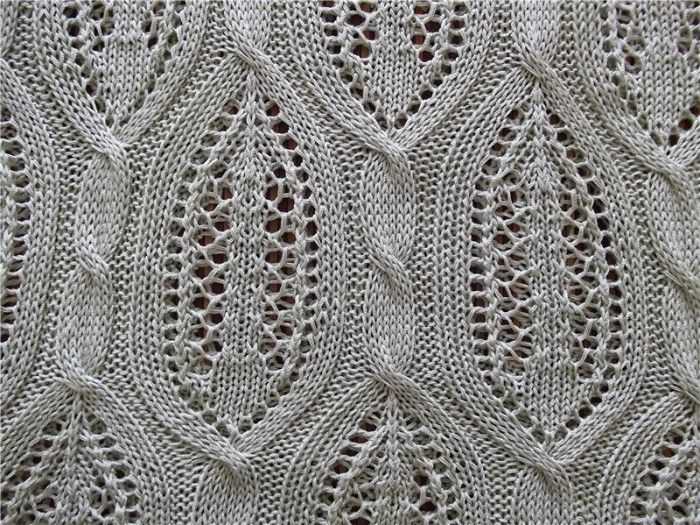
Lace knitting is a technique that creates intricate and delicate patterns using a combination of yarn overs, decreases, and knit and purl stitches. There are numerous lace knitting stitch patterns available, each with its own unique design. Here, we will explore some common lace knitting stitches and their variations.
1. Stockinette lace stitch: This is a simple lace stitch pattern that incorporates alternating rows of stockinette stitch and yarn overs. The result is a beautiful, openwork fabric with an elongated stitch pattern. Variations of this stitch can include additional yarn overs or different combinations of knit and purl stitches within the rows.
2. Feather and fan stitch: The feather and fan stitch is a classic lace pattern that features clusters of knit and purl stitches, creating a wavy, scalloped edge. This stitch is often used for shawls, scarves, and blankets. Variations can include altering the number of stitches in each cluster or adding additional lace motifs within the pattern.
3. Diamond lace stitch: The diamond lace stitch is a versatile pattern that creates a series of interconnected diamond shapes. This stitch can be used for various projects, including sweaters, socks, and hats. Variations may include different combinations of yarn overs, decreases, and knit and purl stitches to create different-sized diamonds or alter the overall look of the pattern.
4. Lace rib stitch: The lace rib stitch combines the texture of ribbing with the delicate nature of lace. This stitch pattern typically features columns of knit and purl stitches separated by yarn overs and decreases. Variations of the lace rib stitch can include adding additional ribbing elements, such as twisted stitches or cables, for more intricate designs.
5. Leaf lace stitch: The leaf lace stitch is inspired by nature and creates a pattern resembling leaves. This stitch often incorporates yarn overs, decreases, and knit and purl stitches to form the shape of a leaf. Variations can include altering the size or shape of the leaves, or incorporating additional lace motifs within the pattern.
These are just a few examples of the many lace knitting stitches and variations available. Lace knitting offers endless possibilities for creating beautiful and intricate designs, making it a favorite technique among knitters of all skill levels.
Tips for blocking lace knitting projects
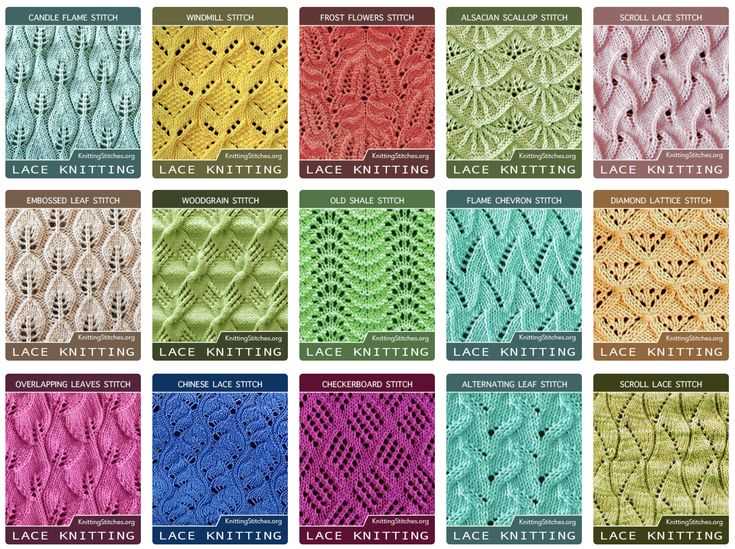
Making lace knitting projects can be a rewarding and intricate process. However, to truly showcase the delicate and intricate lace stitches, proper blocking is essential. Here are some tips to help you achieve beautiful results when blocking your lace knitting projects.
1. Start with a good soak

Before blocking your lace knitting project, give it a gentle soak in lukewarm water with a bit of wool wash or mild detergent. This helps relax the fibers and remove any dirt or oils that may have accumulated during the knitting process.
2. Use blocking wires or pins
To ensure that your lace stitches open up fully, use blocking wires or pins to stretch your project into shape. Insert the wires or pins along the edges of your lace, gently pulling and adjusting until the desired shape and size is achieved.
3. Pay attention to the dimensions
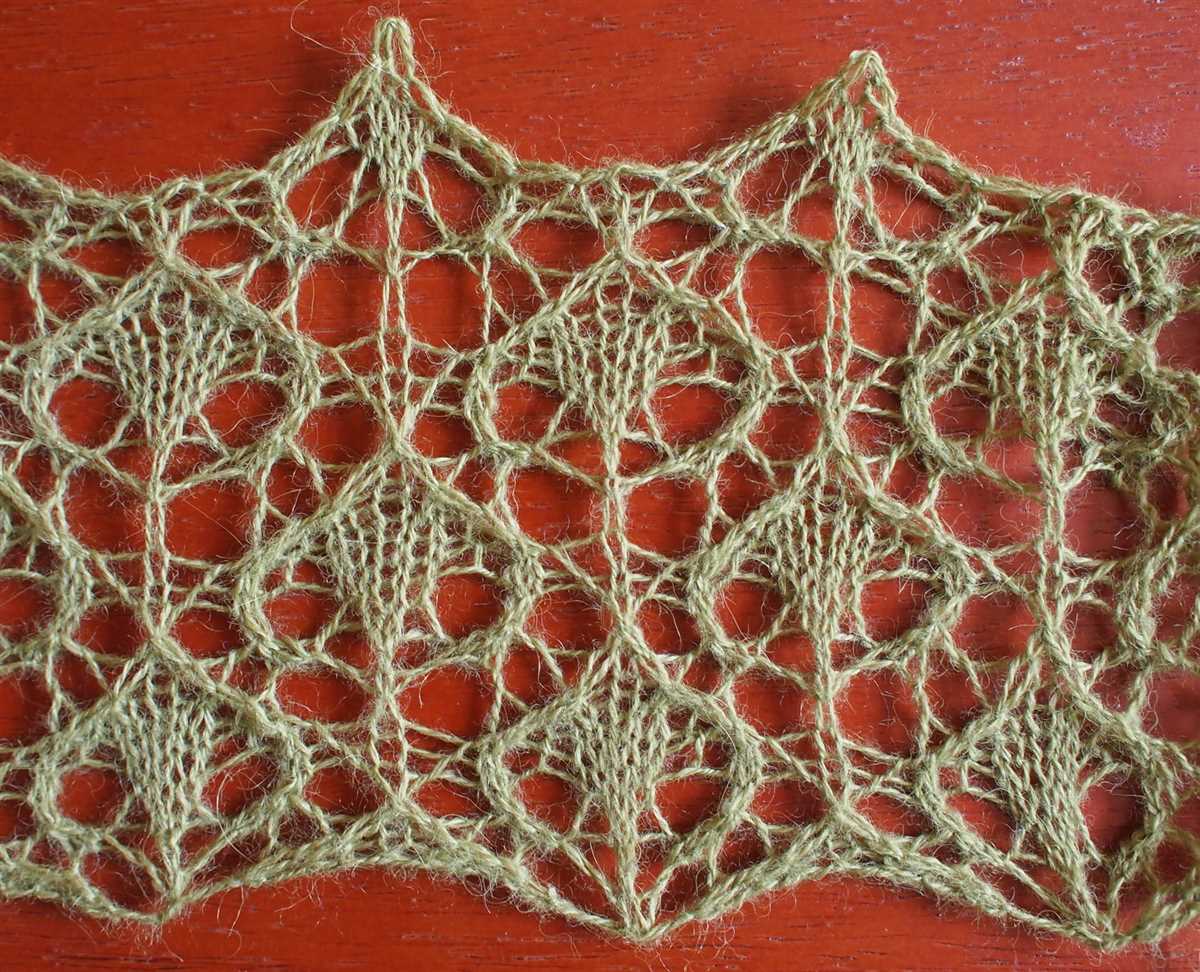
Make sure to measure the dimensions of your lace knitting project before and during the blocking process. This will help you ensure that the finished piece matches the desired size and shape.
4. Let it dry completely
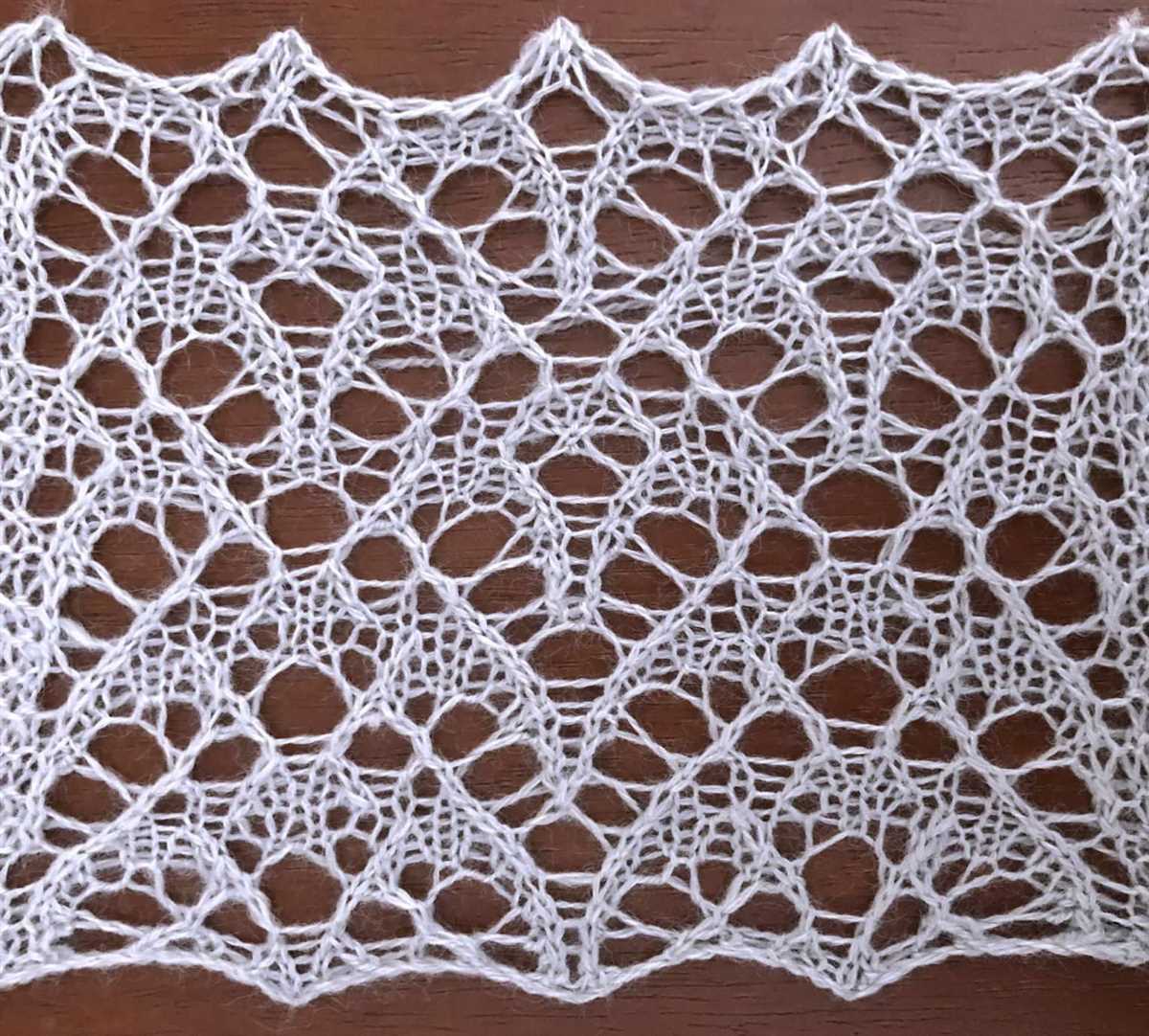
After blocking, allow your lace knitting project to dry completely before removing the pins or wires. This helps set the shape and ensures that the lace stitches hold their form beautifully.
5. Handle with care
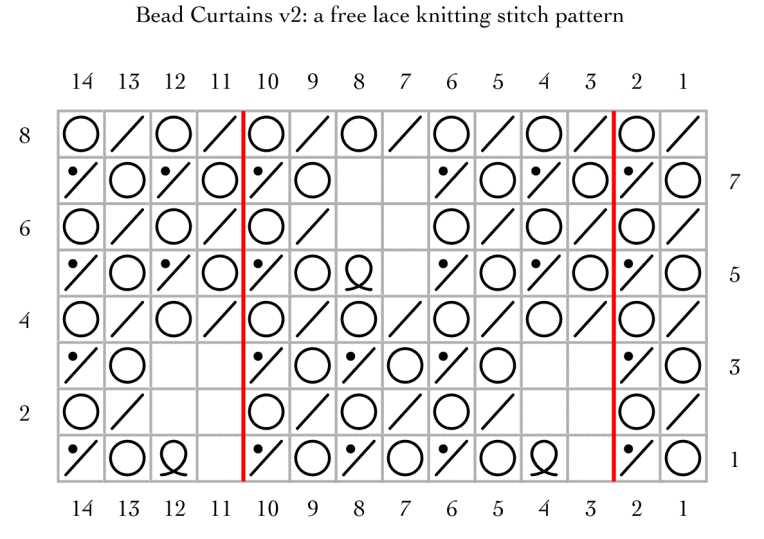
Once your lace knitting project is dry and the pins or wires have been removed, handle it with care to avoid stretching or distorting the delicate lace stitches. Store it in a safe place where it won’t get tangled or crushed.
Following these tips will help you achieve stunning results when blocking your lace knitting projects. With proper blocking, the intricate lace stitches will showcase their true beauty and make your project a true masterpiece.
Creating your own lace knitting stitch patterns
If you’re an avid knitter and want to take your skills to the next level, creating your own lace knitting stitch patterns can be a satisfying challenge. Lace knitting involves creating intricate patterns and designs using yarn overs, decreases, and twisted stitches to form delicate openwork motifs. By designing your own lace patterns, you can add a personal touch to your projects and create unique and beautiful pieces.
When it comes to creating lace knitting stitch patterns, there are a few key steps to consider. Firstly, you’ll need to decide on the overall style and theme of your design. Do you want a traditional lace pattern with floral motifs, or do you prefer a more modern and geometric design? Once you have a clear idea of the style you want, you can start sketching out your ideas on paper or using design software.
Next, you’ll need to choose the yarn and needles for your project. Lace knitting typically requires fine yarn and small needles to create the intricate stitch patterns. Choose a yarn that has good stitch definition and drapes well, and select needles that are appropriate for the thickness of your chosen yarn. It’s also important to swatch your chosen stitch pattern to ensure that you achieve the desired gauge and that the stitches are clear and well-defined.
Once you have your design and materials ready, you can start knitting your lace pattern. Begin by casting on the desired number of stitches and carefully follow your chart or written instructions. Lace knitting can be challenging, as it often involves complex stitch combinations and requires concentration and attention to detail. Take your time and don’t be afraid to frog your work and start again if you make a mistake.
As you gain experience in creating lace knitting stitch patterns, you can experiment with different stitch combinations and techniques to develop your own unique style. You can also incorporate beads or other embellishments into your designs to add extra sparkle and dimension. The possibilities are endless, and by creating your own lace patterns, you can truly make your knitting projects one of a kind.
In conclusion, creating your own lace knitting stitch patterns can be a rewarding and creative process. With careful planning, attention to detail, and lots of practice, you can design beautiful and intricate lace patterns that will impress and delight. So grab your needles and yarn and start exploring the world of lace knitting!
Projects using lace knitting stitch patterns
When it comes to knitting, lace stitch patterns add a touch of elegance and beauty to any project. Whether you are a beginner or an experienced knitter, incorporating lace patterns into your projects can create stunning results. Here are a few ideas for projects that make use of lace knitting stitch patterns:
Lace Shawl
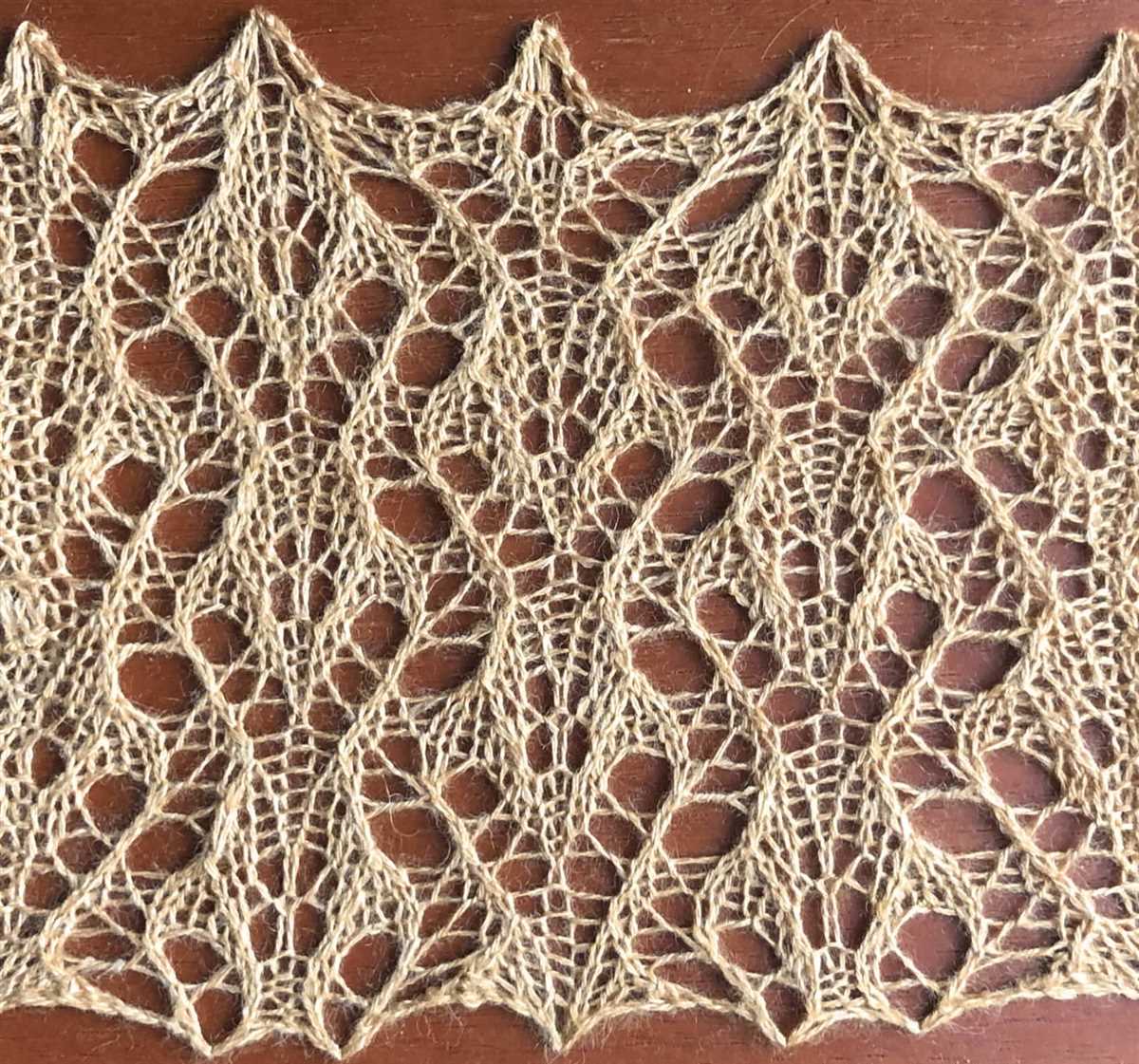
A lace shawl is a classic project that allows you to showcase intricate lace patterns. You can choose from a variety of lace stitch patterns, such as the feather-and-fan pattern or the diamond lace pattern, to create a shawl with a delicate and airy feel. Knitting a lace shawl can be a relaxing and enjoyable project that results in a beautiful and versatile accessory.
Lace Scarf
A lace scarf is another popular project that showcases the beauty of lace knitting. With a lace stitch pattern, you can create a scarf with a delicate and feminine look. It can be a great accessory to add elegance to your outfit or to gift to someone special. Whether you choose a simple lace pattern or a more intricate design, knitting a lace scarf is a rewarding and enjoyable project.
Lace Sweater
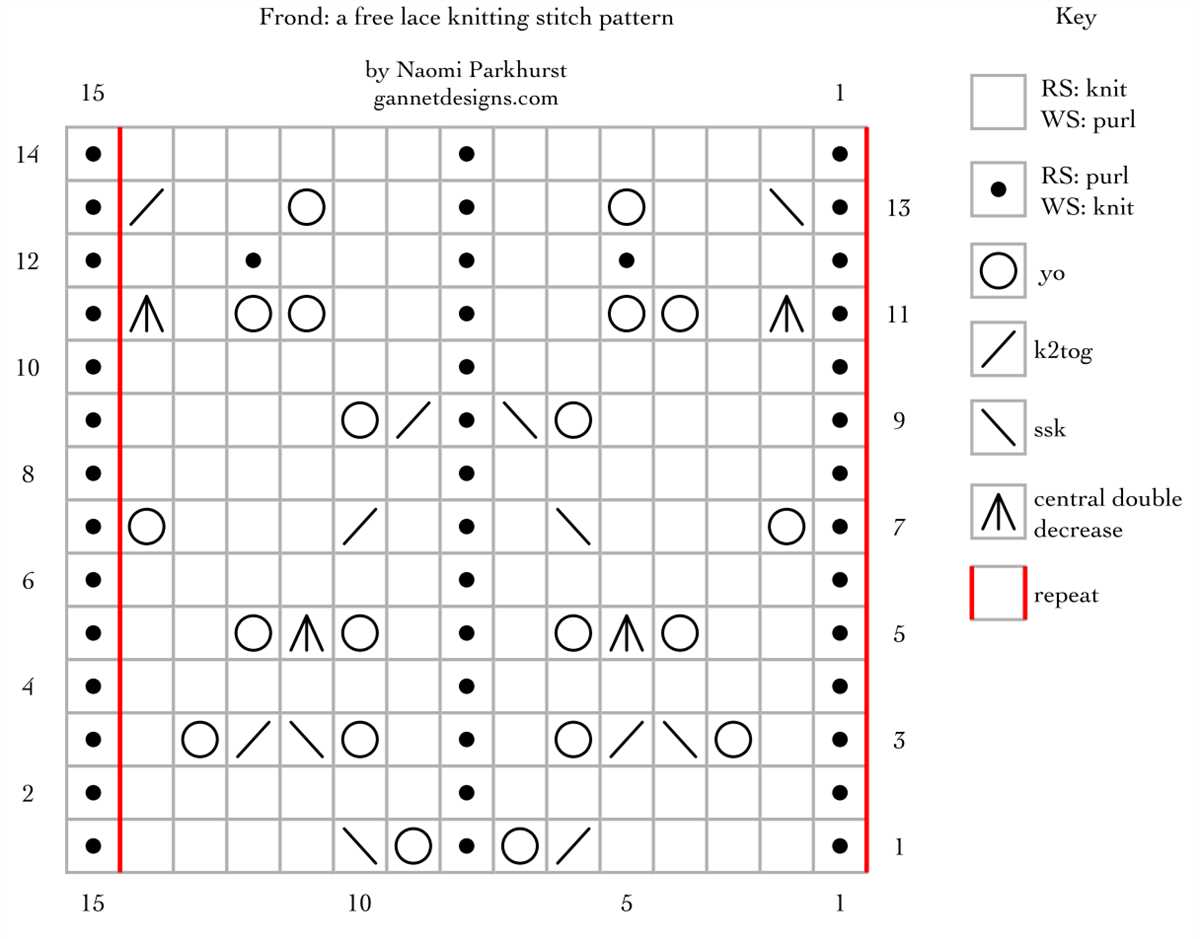
If you are looking for a more challenging project, consider knitting a lace sweater. With lace stitch patterns, you can create beautiful and delicate details on the sleeves, yoke, or even the entire sweater. A lace sweater can be a statement piece in your wardrobe, adding an elegant and feminine touch to any outfit. It requires more advanced knitting skills, but the end result is definitely worth it.
Lace Baby Blanket
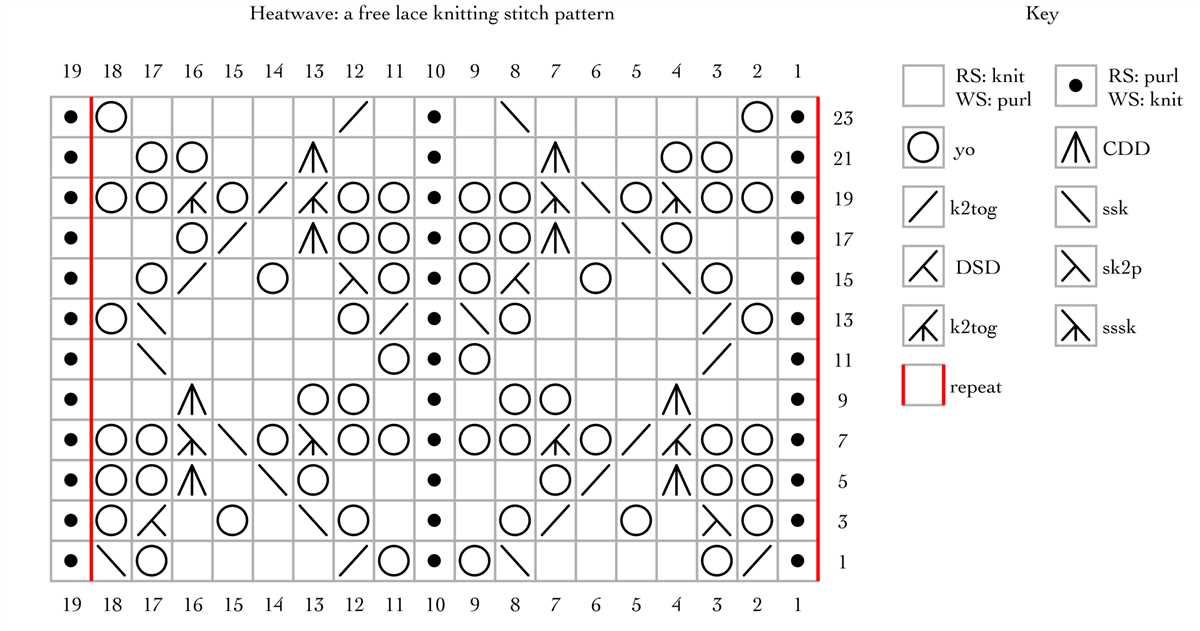
Knitting a lace baby blanket is a wonderful way to welcome a new arrival. With lace stitch patterns, you can create an intricate and delicate design that is perfect for a baby blanket. A lace baby blanket can be a cherished heirloom piece that can be passed down through generations. It is a project that requires time and attention to detail, but the result is a beautiful and meaningful gift for a newborn.
Lace Socks
If you are looking for a smaller project, knitting lace socks can be a great option. With lace stitch patterns, you can create beautiful and lightweight socks that are perfect for warmer weather or for wearing around the house. Knitting lace socks can be a fun and portable project that allows you to experiment with different lace patterns and color combinations.
Whether you choose to knit a lace shawl, scarf, sweater, baby blanket, or socks, incorporating lace knitting stitch patterns can add an element of beauty and sophistication to your projects. With a wide range of lace patterns available, you can explore different designs and create unique and stunning results. Lace knitting allows you to showcase your skills as a knitter and create timeless pieces that can be treasured for years to come.
Resources for learning more about lace knitting

Interested in exploring lace knitting further? There are plenty of resources available to help you learn new techniques, find patterns, and connect with other lace knitters.
One of the best ways to learn more about lace knitting is to join a knitting community or group. Online communities like Ravelry have dedicated lace knitting groups where you can find support, ask questions, and share your projects. You can also find a range of lace knitting patterns on Ravelry, some of them available for free.
Books
If you prefer learning from books, there are several excellent resources available. “Lace Knitting” by Megan Goodacre is a comprehensive guide to lace knitting techniques, with detailed instructions and stitch patterns. “Knitted Lace of Estonia” by Nancy Bush explores the rich tradition of Estonian lace knitting, with history, techniques, and beautiful patterns to try. “A Gathering of Lace” by Meg Swansen is a collection of lace knitting patterns from various designers, perfect for finding inspiration for your next project.
Online tutorials and videos
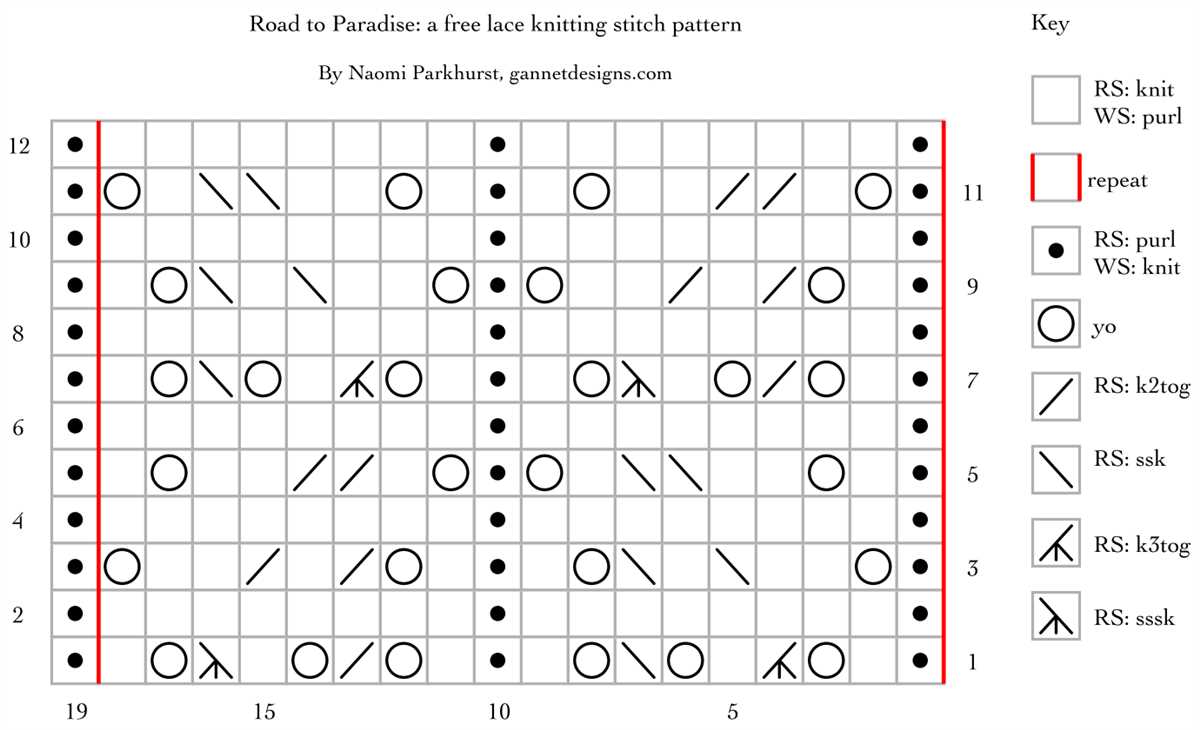
If you prefer visual learning, there are numerous online tutorials and videos available. Craftsy (now Bluprint) offers several lace knitting classes taught by experts, including “Lace Shawl Design” by Miriam Felton and “Mastering Lace Shawls” by Laura Nelkin. YouTube is also a great resource for finding free lace knitting tutorials from experienced knitters.
Magazines and online publications

Magazines like “Interweave Knits” and “Knitscene” often include lace knitting patterns and articles on lace knitting techniques. By subscribing to these magazines, you can stay updated on the latest trends and discover new designers. Several online publications, such as “Knitty” and “Lace n Beads,” also feature lace knitting patterns and articles.
Knitting workshops and retreats
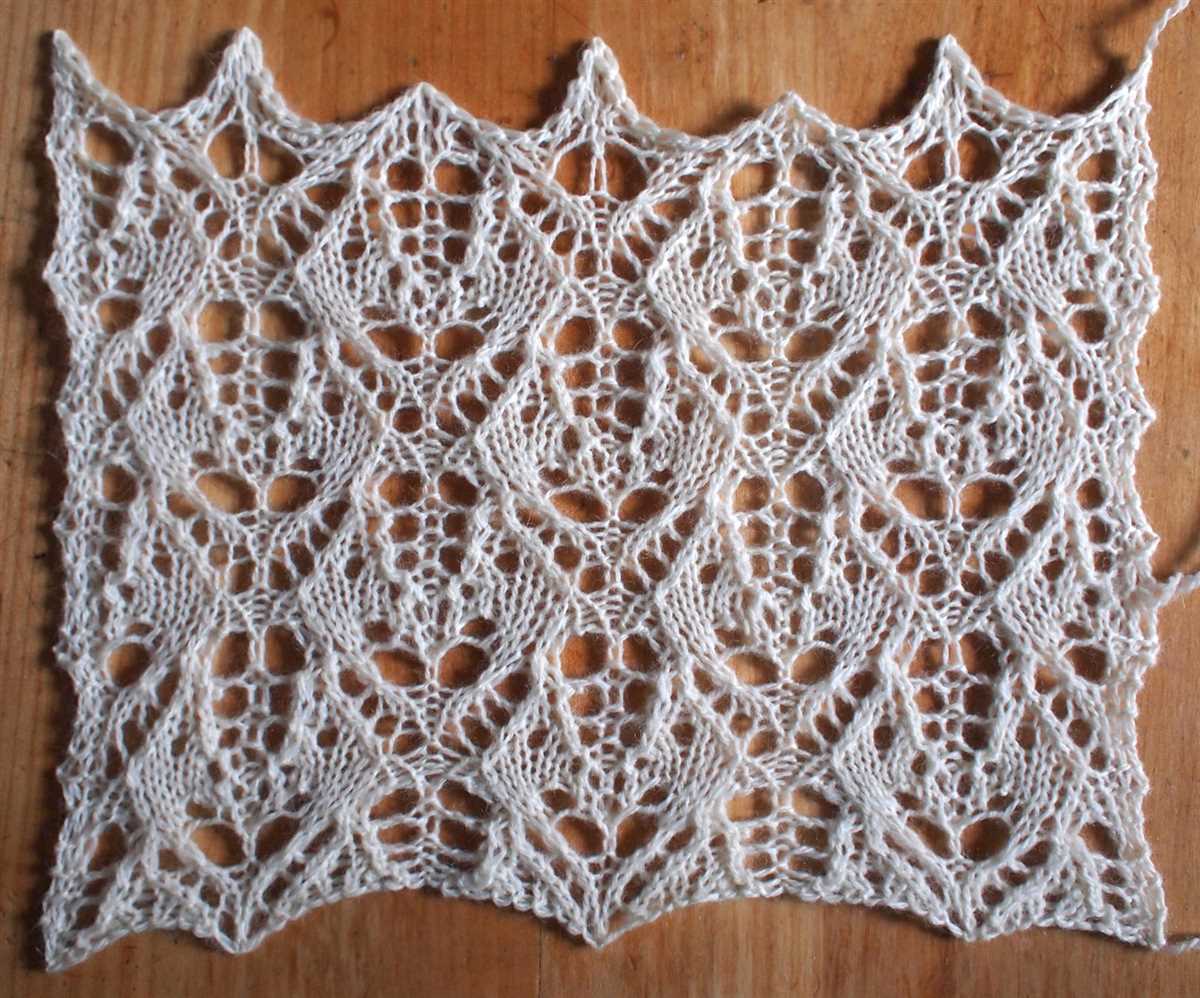
If you are serious about expanding your lace knitting skills, consider attending a knitting workshop or retreat. These events offer classes taught by experienced lace knitters and the opportunity to connect with other knitting enthusiasts. Check local yarn shops or knitting guilds for information on upcoming workshops and retreats in your area.
With the help of these resources, you can continue your lace knitting journey, expanding your skills and creating beautiful pieces. Whether you prefer books, online tutorials, magazines, or workshops, there are plenty of options to suit your learning style. Happy lace knitting!